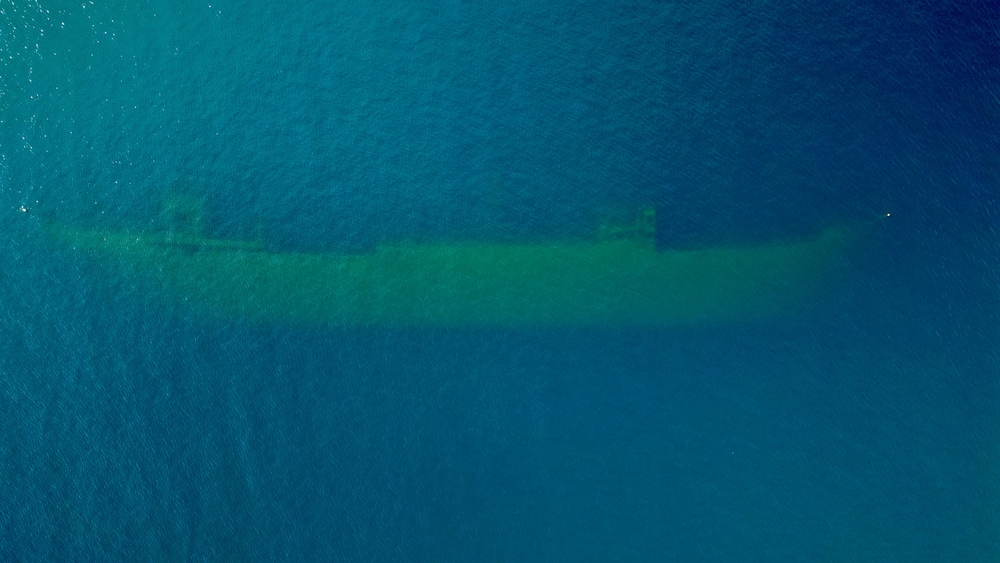The only missing piece of history was understanding the ship’s condition today.
Others are reading now
The wreckage of the U.S.S. Stewart, the only American destroyer captured by Japanese forces during World War II, has been located off the coast of California.
Remains Intact and Upright
Known as the “Phantom Ship of the Pacific,” the vessel was found using three autonomous underwater drones that explored nearly 130 square kilometers (50 square miles) of the ocean floor, as reported by Digi24.
These orange, six-meter-long drones, resembling torpedoes, utilized advanced sonar technology to detect the wreck in deep waters more than 100 kilometers (62 miles) from San Francisco.
Resting on the ocean floor in what is now the Cordell Bank National Marine Sanctuary, the U.S.S. Stewart (DD-224) measures 95 meters (312 feet) in length. Despite being overrun by marine life, the ship is remarkably intact and upright.
Also read
“The level of preservation is exceptional for a vessel of its age and may be one of the best-preserved examples of a four-stack destroyer in the U.S. Navy,” stated Maria Brown, the sanctuary’s administrator.
Captured by Japanese Forces
This discovery, made during a demonstration of underwater technology, highlights advancements in ocean exploration using modern robotics. Ocean Infinity, the company operating the drones, possesses the largest fleet of autonomous underwater vehicles in the world.
These drones not only aid in shipwreck discoveries but also play crucial roles in offshore construction projects like wind farms and oil platforms.
The U.S.S. Stewart’s storied past dates back to its sinking in 1942 near Java, Indonesia, after being captured and repaired by Japanese forces. Post-war, the U.S. Navy reclaimed the ship and used it as a target for gunnery practice, sinking it on May 24, 1946.
Russ Matthews, president of the Air/Sea Heritage Foundation, emphasized that the only missing piece of history was understanding the ship’s condition today, which was finally revealed through this recent expedition.


